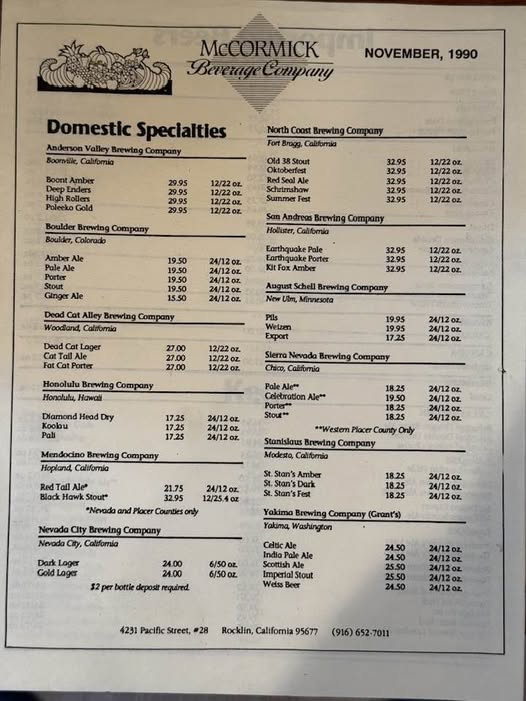
The Smithsonian has a story about the Irish Pub Company (link below). We visited Fado, the first pub it built, in Atlanta not long after it opened in 1996, and we were not surprised last September to see that not all pubs in Ireland look like that. Witness Dick Mac’s in Dingle.
~~~~~~~~~~~~~~~~~~~~~~
This link is not beer related, but it seems appropriate because the topic Friday for The Session #145 is “Critique, not Criticism.” Rolling Stone TV critic saw all of Season Two of Severance before the first of us saw the first episode and raved about it. After it concluded last week, he expressed reservations.
“Then a strange thing happened: as I began writing recaps of each episode, particularly in the season’s second half, I found myself dwelling far more on those hiccups than on the exciting/surprising/funny/distinct parts I’d so highly praised in early January. It got to the point where, in recent weeks, I was wondering exactly why I had been so positive in the first place. A little of this is an occupational hazard of doing weekly recaps, where the more you dig into a series, the harder it is to ignore flaws that may have whizzed by on initial viewing.”
In his post announcing Friday’s topic, Matt Curtis wrote, “When it comes to restaurant, wine, or whisky writing there is an expectation for the writer to levy fair criticism because it’s already established that this is the done thing.” The same is true of movies, TV, theater, books, brands of cereal, and so on. And the more time a critic spends with what is being reviewed the easier it is to spot flaws. Remember New Rule #3, but don’t overlook the total experience. At least that will be my goal Friday.
~~~~~~~~~~~~~~~~~~~~~~
LEDE OF THE WEEK
When I walk into a near-empty Persevere on a drizzly Leith weekday, its vastness swallows me up like a whale.
Moments later, when I gingerly take my pint of Newbarns Pale Ale to the table and sit in one of the half-boothed banquettes, a feeling of tranquility comes over me. My initial fear of being gulped up by a sea monster, like Ahab or Pinocchio, abates. Instead it feels like I’m resting in a Victorian barque’s cabin, navigating the doldrums.
I glance at paintings that look weathered for centuries and the clutter of barrelled seating and wonder how a pub this size can be so vast, yet so cosy. How can a one-roomed pub segregate my feelings in this way? It’s not exactly an off-kilter liminal space, more like a hidden building in a drowned town.
Read more



